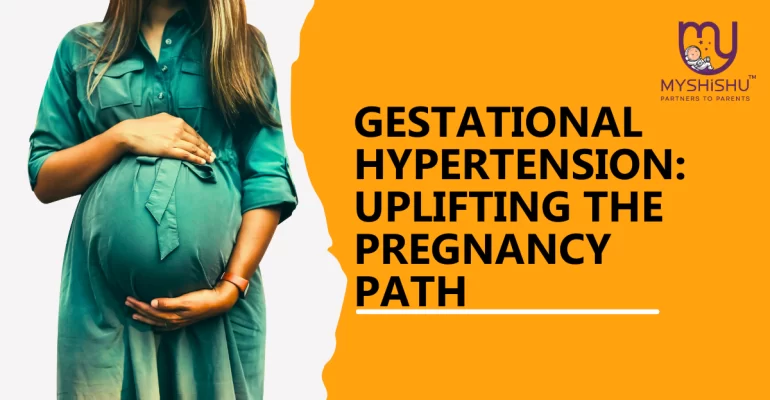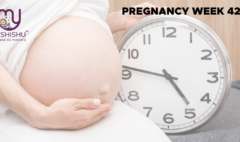Gestational Hypertension: Uplifting The Pregnancy Path
Gestational Hypertension: Uplifting The Pregnancy Path
Introduction
Gestational hypertension, a term that might sound formidable but is a critical aspect of pregnancy health, deserves our understanding and attention. As expectant mothers embark on the transformative journey of pregnancy, the specter of hypertension can cast shadows. In this guide, we delve into the nuances of gestational hypertension, unraveling its complexities, exploring its impact on both mother and baby and, most importantly, empowering women with the knowledge to navigate this aspect of pregnancy with resilience and informed decision-making. Let’s embark on a journey where awareness meets empowerment in the realm of gestational hypertension.
What is gestational hypertension?
Gestational hypertension, often referred to as pregnancy-induced hypertension (PIH), is a condition characterized by high blood pressure that emerges during pregnancy. Unlike pre-existing hypertension, gestational hypertension develops after the 20th week of pregnancy and typically resolves post-delivery. This condition demands vigilant monitoring, as it can potentially evolve into more severe complications, such as preeclampsia. Understanding the dynamics of gestational hypertension is pivotal for expectant mothers, as it empowers them to actively participate in their prenatal care and navigate the intricate landscape of pregnancy with informed decision-making.
What Is High-Blood Pressure (Hypertension)?
High blood pressure, or hypertension, is a condition where the force of blood against the artery walls is consistently too high. This heightened pressure can strain the heart, leading to potential health issues. The two key measurements, systolic and diastolic, indicate the pressure during heartbeats and between them, respectively. Recognizing and managing high blood pressure is crucial for overall health, particularly during pregnancy, to ensure a safe and healthy journey for both mother and baby.
Distinguishing High Blood Pressure in Pregnancy from Other Times
High blood pressure during pregnancy differs from hypertension at other times due to its unique context. Gestational hypertension specifically emerges after the 20th week of pregnancy and typically resolves post-delivery. Unlike other forms of high blood pressure, it poses distinct risks for both the mother and the baby. Vigilant monitoring, specialized care, and awareness of the potential complications associated with gestational hypertension are essential to ensuring optimal maternal and fetal health during this critical period.
Forms of High Blood Pressure During Pregnancy
High blood pressure during pregnancy encompasses various forms, each demanding specific attention. Understanding their unique symptoms is crucial for timely intervention and the well-being of both mother and baby.
Symptoms of Different High Blood Pressure Forms:
- Gestational Hypertension:
- Elevated blood pressure after 20 weeks, requiring vigilant monitoring for potential complications.
- Chronic Hypertension:
- Pre-existing high blood pressure demands ongoing management for a healthy pregnancy.
- Preeclampsia:
- High blood pressure is coupled with organ damage, necessitating immediate medical attention for optimal outcomes.
Understanding these distinct forms is key to effective management, ensuring the well-being of both the expectant mother and the developing baby.
Higher Risk of Gestational Hypertension: Identifying Vulnerable Groups
Several factors increase the likelihood of developing high blood pressure during pregnancy, including:
- First-time Mothers:
- Women experiencing their first pregnancy face a higher risk.
- Age Extremes:
- Younger than 20 and older than 35 are more susceptible.
- Obesity:
- Excess weight increases the risk of gestational hypertension.
- Multiple Pregnancies:
- Women carrying twins or more are at elevated risk.
- Pre-existing Conditions:
- Individuals with pre-existing conditions like diabetes or kidney disease face heightened susceptibility.
Regular prenatal care is vital for early detection and management in these higher-risk groups.
Differentiating Gestational Hypertension and Preeclampsia: A Clear Overview
Gestational hypertension and preeclampsia, though both involve high blood pressure during pregnancy, are distinct conditions with varying implications. Understanding their differences is crucial for accurate diagnosis and tailored care, ensuring optimal outcomes for both mother and baby.
Conditions:
- Gestational hypertension:
- Develops after 20 weeks.
- Resolves post-delivery.
- No organ damage.
- Preeclampsia:
- High blood pressure with organ damage.
- Can occur later in pregnancy.
- May persist after delivery.
Symptoms and causes
Gestational hypertension, marked by elevated blood pressure during pregnancy, presents distinct symptoms and potential causes. Understanding these nuances is crucial for expectant mothers to actively engage in their prenatal care, fostering a healthy and informed pregnancy journey.
Symptoms of Gestational Hypertension:
- Elevated blood pressure: consistent high readings after 20 weeks.
- No Organ Damage: Absence of signs indicating damage to organs.
- Resolves Post-Delivery: Typically resolves after childbirth.
Causes of Gestational Hypertension:
- Placental Issues: Unclear exact cause, often associated with complications related to the placenta’s function.
Being vigilant about these symptoms and causes empowers expectant mothers to navigate gestational hypertension with informed decision-making and comprehensive care.
Signs of high blood pressure
Identifying signs of high blood pressure is crucial for proactive health management. Common indicators include:
- Headaches: persistent or severe headaches.
- Shortness of breath: difficulty breathing or breathlessness.
- Visual disturbances: blurred or impaired vision.
- Chest pain: discomfort or pain in the chest.
- Fatigue: Profound and unexplained fatigue.
- Nausea or Vomiting: persistent nausea or vomiting.
- Dizziness: feeling lightheaded or dizzy.
Recognizing these signs prompts timely medical attention, which is crucial for early intervention and effective management of high blood pressure. Regular monitoring and proactive health practices are key to maintaining overall well-being.
Dangers of High Blood Pressure During Pregnancy
High blood pressure, if left unmanaged during pregnancy, can pose serious risks to both the expectant mother and the developing baby. Understanding these dangers is pivotal for timely intervention and comprehensive care. Here’s an in-depth exploration:
- Preeclampsia:
- High blood pressure can progress to preeclampsia, a severe condition marked by elevated blood pressure and organ damage. Preeclampsia poses substantial risks to both maternal and fetal health, requiring immediate medical attention.
- Preterm Birth:
- Expectant mothers with untreated high blood pressure have an increased likelihood of experiencing preterm labor. Premature birth can lead to various complications, impacting the baby’s overall health and development.
- Low birth weight:
- High blood pressure may compromise blood flow to the uterus, affecting fetal growth and development. This can result in a low birth weight, potentially leading to health challenges for the baby.
- Placental Abruption:
- The elevated pressure on blood vessels can contribute to placental abruption, a condition where the placenta separates from the uterus prematurely. This poses serious risks to both the mother and the baby and may necessitate immediate medical intervention.
- Cesarean Delivery:
- High blood pressure increases the likelihood of requiring a cesarean section (C-section) for delivery. While C-sections are routine and safe, they do carry inherent surgical risks and a longer recovery period.
- Maternal Stroke:
- Persistently high blood pressure during pregnancy raises the risk of a maternal stroke. Strokes can have severe consequences for the mother’s health and may necessitate extensive medical intervention.
- Developmental Issues:
- The impact of high blood pressure on fetal development can lead to long-term health issues for the baby, including developmental delays and a higher risk of chronic conditions later in life.
To mitigate these dangers, expectant mothers are encouraged to prioritize regular prenatal check-ups, adopt a healthy lifestyle, and follow their healthcare provider’s guidance for managing blood pressure. Timely medical intervention and proactive health practices are paramount to ensuring a safe and healthy pregnancy journey for both the mother and the baby.
Impact of Gestational Hypertension on the Baby
Gestational hypertension, if unmanaged, can have significant effects on the developing baby. Here’s an exploration of how this condition may impact the infant:
- Reduced blood flow to the placenta:
- Elevated blood pressure can compromise blood flow to the placenta, hindering the delivery of oxygen and nutrients to the baby. This may result in restricted fetal growth and development.
- Low birth weight:
- Insufficient blood flow and nutrient delivery can contribute to low birth weight, posing potential health challenges for the baby both at birth and in the postnatal period.
- Preterm Birth:
- Gestational hypertension increases the risk of preterm birth, exposing the baby to the challenges associated with early delivery, including respiratory and developmental issues.
- Developmental Delays:
- The impact of gestational hypertension on fetal development may lead to developmental delays for the baby, affecting milestones and long-term health outcomes.
- Neonatal Intensive Care Unit (NICU) Admission:
- Babies born to mothers with gestational hypertension may require admission to the NICU for specialized care, especially if they are born preterm or with a low birth weight.
- Increased risk of chronic conditions:
- Long-term consequences may include an elevated risk of chronic health conditions for the baby, emphasizing the importance of monitoring and early intervention.
Managing gestational hypertension through regular prenatal care, blood pressure monitoring, and following healthcare provider recommendations is essential for mitigating these potential effects on the baby. Timely intervention can significantly improve outcomes and ensure the best possible start for the infant.
What is the normal blood pressure during pregnancy?
Maintaining normal blood pressure during pregnancy is crucial for maternal and fetal health. The standard blood pressure range for expectant mothers is typically around 120/80 mm Hg. However, individual variations may occur, and healthcare providers monitor blood pressure throughout pregnancy to ensure optimal well-being. High blood pressure can lead to complications, emphasizing the importance of regular prenatal check-ups. Pregnant individuals should actively engage with their healthcare providers, adopt a healthy lifestyle, and promptly address any deviations from the normal blood pressure range. This proactive approach safeguards the well-being of both mother and baby during this transformative journey.
Diagnosis and Treatment of Gestational Hypertension
Diagnosis:
- Blood pressure monitoring:
- Regular blood pressure checks during prenatal visits are fundamental. Persistently elevated readings may prompt further investigation.
- Urine Tests:
- Assessing protein levels in the urine helps identify potential complications, particularly signs of progressing to preeclampsia.
- Complete Blood Count (CBC) and Blood Chemistry:
- Comprehensive blood tests aid in assessing overall health and identifying any potential underlying conditions.
Treatment:
- Lifestyle Modifications:
- Emphasis on a well-balanced diet rich in nutrients, regular exercise, and appropriate weight management.
- Blood Pressure Medications:
- If lifestyle changes aren’t sufficient, healthcare providers may prescribe medications like methyldopa or labetalol, considered safe during pregnancy.
- Close Monitoring:
- Regular check-ups to monitor blood pressure levels, adjust treatment plans, and assess overall maternal and fetal health.
- Hospitalization, if severe:
- In severe cases or if preeclampsia is diagnosed, hospitalization may be necessary for closer observation, specialized care, and potentially early delivery to protect both mother and baby.
- Fetal Monitoring:
- Regular fetal monitoring, including ultrasounds and non-stress tests, is necessary to ensure the well-being of the baby.
Gestational hypertension demands a comprehensive approach to diagnosis and treatment. Early detection through vigilant monitoring allows for timely intervention, minimizing potential risks, and ensuring the best possible outcomes for both expectant mothers and their infants. Regular communication with healthcare providers, adherence to treatment plans, and lifestyle modifications are integral components of managing gestational hypertension effectively.
Ensuring a Safe Delivery with High Blood Pressure
Navigating pregnancy with high blood pressure requires proactive steps to ensure a safe delivery. Here’s a guide for expectant mothers:
- Regular prenatal check-ups:
- Consistent monitoring of blood pressure and overall health during prenatal visits is crucial for early detection and management.
- Communication with the Healthcare Provider:
- Maintain open communication with your healthcare provider, discussing any concerns or changes in symptoms promptly.
- Medication Adherence:
- If prescribed blood pressure medications, adhere to the prescribed dosage and schedule as directed by your healthcare provider.
- Lifestyle Modifications:
- Embrace a healthy lifestyle with a balanced diet, regular exercise, and stress management to support overall well-being.
- Fetal Monitoring:
- Regular fetal monitoring through ultrasounds and non-stress tests ensures the baby’s health is closely tracked.
- Hospital Delivery Planning:
- Discuss delivery plans with your healthcare provider, considering potential complications and the best approach for a safe delivery.
- Preterm Birth Awareness:
- Be aware of signs of preterm labor and seek immediate medical attention if you experience symptoms such as contractions, abdominal pain, or vaginal bleeding.
- Emergency Plan:
- Develop an emergency plan with your healthcare provider, ensuring swift and coordinated responses to any unexpected complications.
- Support System:
- Establish a robust support system, including family and friends, to assist with daily tasks and provide emotional support.
- Post-Delivery Monitoring:
- Continue blood pressure monitoring post-delivery, as elevated levels may persist, requiring ongoing management.
Navigating a safe delivery with high blood pressure demands collaboration with healthcare providers, proactive self-care, and a well-thought-out delivery plan. By taking these strategic steps, expectant mothers can enhance the likelihood of a positive birthing experience while safeguarding the health of both themselves and their infants.
Will I be induced if I have gestational hypertension?
In some cases of gestational hypertension, induction may be recommended by your healthcare provider to manage potential risks and ensure a safe delivery for both you and your baby. The decision is based on individual circumstances and the severity of the hypertension. Open communication with your healthcare team will guide the most suitable approach for a healthy delivery.
Preventing Gestational Hypertension
While gestational hypertension is not entirely preventable, expectant mothers can adopt proactive measures to mitigate risks and promote a healthier pregnancy:
- Regular prenatal check-ups:
- Consistent monitoring of blood pressure during prenatal visits allows for early detection and timely intervention.
- Healthy Lifestyle Choices:
- Embrace a balanced diet, engage in regular exercise, manage stress, and avoid smoking and excessive alcohol intake.
- Maintain a healthy weight.
- Achieve and maintain a healthy weight before and during pregnancy to reduce the risk of hypertension.
- Limit salt intake:
- Moderating salt consumption can help control blood pressure levels.
- Stay Hydrated:
- Proper hydration supports overall health and can contribute to maintaining healthy blood pressure.
- Know Your Family History:
- Understanding your family’s medical history enables proactive monitoring and management of potential risk factors.
- Early Intervention for Chronic Conditions:
- Effectively manage pre-existing health conditions such as diabetes or chronic hypertension before becoming pregnant.
By incorporating these preventive measures into your lifestyle and seeking early intervention when needed, you empower yourself to navigate pregnancy with a reduced risk of gestational hypertension, fostering a safer and healthier journey for both you and your baby.
Will I still have high blood pressure (hypertension) after my baby is delivered?
While gestational hypertension typically resolves after childbirth, some women may continue to experience high blood pressure post-delivery. It’s crucial to monitor blood pressure regularly, especially if prescribed medications during pregnancy. Adopting a healthy lifestyle, including a balanced diet, regular exercise, and stress management, supports postpartum well-being. Consult with your healthcare provider to create a tailored plan for continued blood pressure management and to ensure a healthy transition into the postpartum period.
Navigating Gestational Diabetes Concerns: When to Seek Guidance
If you’re experiencing gestational diabetes, it’s crucial to monitor for certain signs and seek prompt medical advice.
- Unstable Blood Sugar Levels:
- If blood sugar levels consistently exceed recommended targets, despite dietary and lifestyle adjustments,.
- Excessive thirst or hunger:
- Persistent feelings of thirst or hunger may indicate uncontrolled gestational diabetes.
- Frequent Urination:
- Excessive urination could be a sign of elevated blood sugar levels.
- Concerns About Fetal Movement:
- Any changes in fetal activity or movements should be discussed with your healthcare provider.
If you notice any of these signs, it’s essential to contact your healthcare provider promptly for appropriate guidance and adjustments to your gestational diabetes management plan. Regular communication ensures optimal care for both you and your baby.
FAQs Related To Gestational Pregnancy
-
What is gestational hypertension?
Gestational hypertension is high blood pressure that develops during pregnancy, typically after 20 weeks, without the presence of protein in the urine.
-
What are the risk factors for gestational hypertension?
Risk factors include being a first-time mother, having a family history of hypertension, being overweight, and carrying multiple babies.
-
How is gestational hypertension diagnosed?
Diagnosis involves regular blood pressure monitoring during prenatal visits and urine tests to check for protein.
-
Can gestational hypertension lead to other complications?
Yes, it may progress to preeclampsia, increasing the risk of preterm birth, low birth weight, and other complications.
-
How is gestational hypertension managed?
Management includes lifestyle changes, medication if necessary, and close monitoring through regular prenatal check-ups.
Conclusion
In conclusion, gestational hypertension presents unique challenges during pregnancy, necessitating vigilant monitoring and proactive management. Regular prenatal check-ups, adherence to prescribed treatments, and a commitment to a healthy lifestyle are paramount. By staying informed, maintaining open communication with healthcare providers, and adopting preventative measures, expectant mothers can navigate gestational hypertension with confidence, fostering a safe and positive pregnancy journey for both themselves and their precious babies.












Comment (1)
postpartum workout plan – https://www.myshishu.in/postpartum workout plan – – Site Title
[…] https://www.myshishu.in/gestational-hypertension/ […]